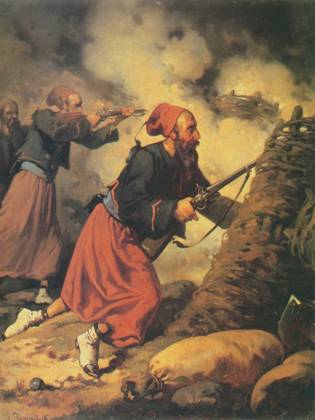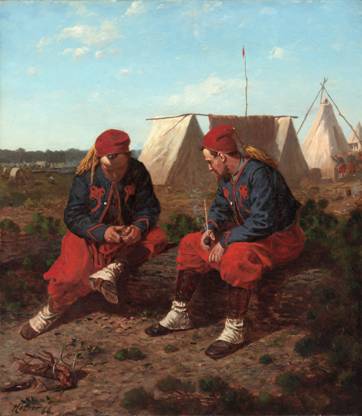Appendix I: Zouaves
In the 1830s, when France held part of North Africa, a French regiment of Zwawa tribesmen was celebrated throughout Europe because of its victories over other Algerian forces. People saw pictures of the colorful Zwawa (pronounced Zouave by the French) uniforms, and they loved them. Their aesthetic resonated with Romanticism, the movement which was then sweeping Europe, transforming the trappings of Western culture, and bringing to prominence poets such as Byron, and artists such as Delacroix. Zouave uniforms spread through the French infantry, and soon, the forces of other countries, too, including Spain and Italy.
French infantry fighting in the Crimean War
Aleksander Raczyński 1858
Wikipedia.org
It was not long before Zouave uniforms made their appearance in the United States, when a Zouave Drill Team toured the nation. After that, every American boy wanted to be a Zouave. Merchants sold children's Zouave uniforms, as fast as their descendants would sell Davy Crockett hats a century later.
When the Civil War began, those boys had grown into adults, and many of them were happy to make themselves easier targets by wearing dashing Zouave garb. There were Union Zouave regiments. There were Confederate Zouave regiments. New York State alone had multiple Zouave regiments. Some of them won fame - at the First Battle of Bull Run, Gen. Stonewall Jackson called the Fifth New York "Red-legged Devils."

Infantrymen of New York's 5th Regiment
The Brierwood Pipe, Winslow Homer, 1864
Wikipedia.org
***

